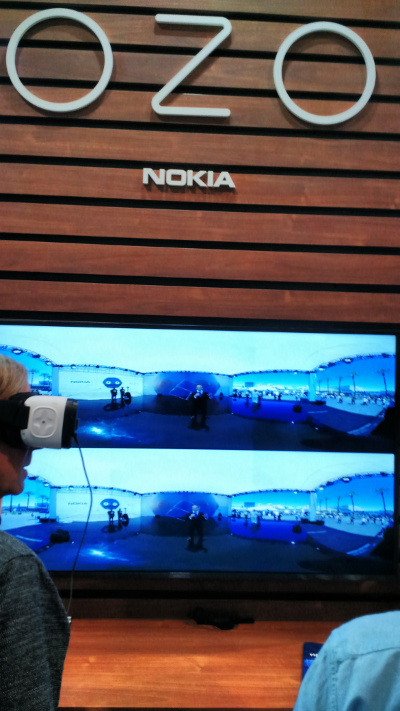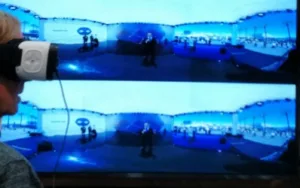At NAB, Nokia Technologies announced new solutions to complement the company’s OZO virtual reality (VR) camera, including live VR broadcasting, 3D stitching, and a VR player software development kit (SDK). The new tools and solutions expand the Nokia Technologies VR ecosystem portfolio, which includes OZO, the first commercially available VR camera to capture full 3D 360-degree video and spatial audio. OZO started shipping to customers in the first quarter of 2016.
 Details of the new offerings are as follows:
Details of the new offerings are as follows:
- The Live VR broadcasting solution for OZO, available to selected partners in Q2 2016 and broadly in Q3 2016, will make the VR experience stronger through 360-degree audio and video, thus enabling viewers to experience events at the same time they are occurring, regardless of location.
- OZO Creator will ship in April with 3D VR stitching functionality, free of charge to OZO customers. The feature dramatically accelerates the turnaround time from content capture to consumption, making it possible to distribute refined VR experiences soon after an event has occurred.
- Nokia Technologies is also making a multi-platform VR player SDK available to OZO customers in Q2 2016. The SDK will support creation of immersive audiovisual applications and experiences with the highest quality playback of OZO content, while also providing support for standard VR video and audio formats. Nokia plans to support all major VR platforms, and does not limit customers’ ability to distribute OZO content with any other technology. This SDK removes the barriers to effortlessly creating and delivering great VR experiences to a wide audience.
In the company’s booth, we saw a live demonstration of VR from the OZO camera to a VR headset. This was an UltraHD image in 3D, encoded by Elemental and sent thru the Akamai CDN to a downlink near the booth, then delivered to the Gear VR headset. Six booths were getting the same VR feeds (separate 3D and 2D feeds). The OZO camera captures natively in stereoscopic 3D.
Three OZO cameras were placed near a stage where live music was being performed on the roof of the Capitol Records building in Hollywood.
The stitching was done in real time and is their own internal solution. This may be fine for static or semi static images, but will probably not work too well for a moving camera or objects that move from one camera’s coverage to the next.
The OZO Pioneer Program, unveiled last month, encourages innovators to create VR experiences and content and rewards creative and innovative contributions. Participants, all of whom receive a $15,000 discount on the OZO VR Camera, have the opportunity to create and share a one-minute demo clip using their OZO and are invited to provide feedback for further development of the OZO camera and VR technologies.
Just after NAB, Nokia and Disney announced a partnership whereby Disney filmmakers and marketing teams will use Nokia’s 360-degree OZO virtual reality cameras to create VR content across all the studio’s brands.
The studio has already used the OZO for two promotional pieces for “The Jungle Book,” one of them a 360-degree roundtable interview with director Jon Favreau and the cast, the second a red carpet experience at the film’s Los Angeles premiere. Other Disney brands that could use the OZO are Marvel and Lucasfilm. (CC)

